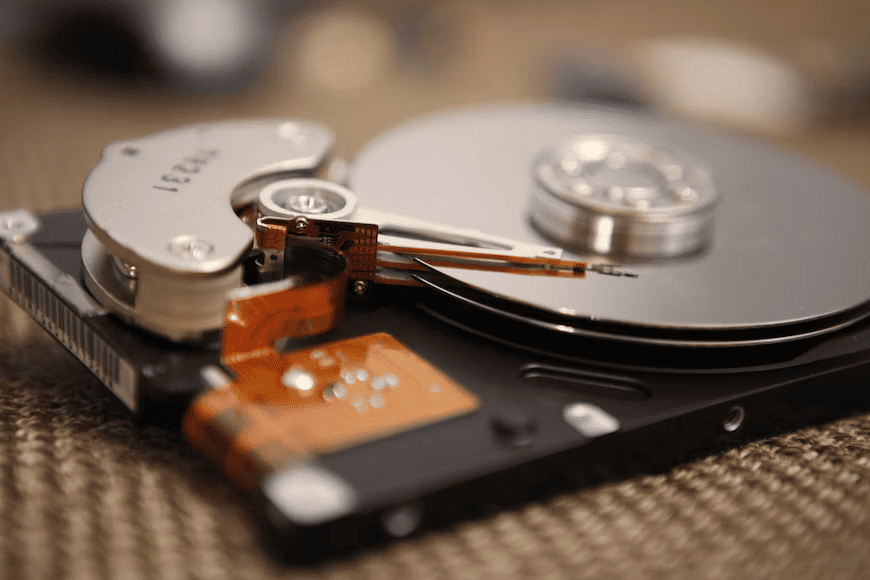Digital forensics is the field of practice that involves the identification, acquisition, and analysis of digital evidence. Today, each criminal case has a digital aspect, and this is where digital forensics experts come in. They help the police narrow in on the perpetrators using digital techniques that ensure accuracy. Digital evidence is also used in court proceedings.
One crucial component of digital forensics is analyzing cyber attacks to prevent future cyber threats, making digital forensics an important part of the incident response process. Digital forensics also comes in handy in the aftermath of an unfriendly incident. It provides important information needed by legal teams, auditors, and law enforcement.
There are various sources to gather electronic evidence. These sources include mobile phones, the Internet of Things, remote storage devices, and basically every other computerized system.
Importance of Digital Forensics
Usually, digital forensics is thought to be limited to digital and computerized environments. However, it has a bigger impact on society. Because computers and cell phones have become an integral part of our day-to-day life, digital evidence is critical to solving legal issues and criminal cases in the digital and the physical world.
All the connected devices generate big amounts of data. Many of them tend to log all the actions performed by the users, as well as the autonomy performed on the device, like data transfers and network connections. This includes mobile phones, cars, routers, traffic lights, personal computers, and other devices within private and public spheres.
In digital investigations, digital evidence is used for the following reasons.
Network Breaches and Data Theft
Digital forensics helps us understand how a breach happened and who was behind it.
Identity Theft and Online Fraud
It is also used to understand the impact of a breach on an organization and its customers.
Murder, Assault, Burglary, and Other Serious Crimes
Digital forensics best practices are used to gather digital evidence from computers, cars, and mobile phones from the vicinity of the crime.
White Collar Crimes
Digital forensics also detects perpetrators in white-collar crimes like extortion, embezzlement, and corporate fraud.
On an organizational level, digital forensics is used for investigating physical security incidents and the ones related to cybersecurity. Digital forensics is commonly used as part of the incident response process.
It detects a breach that occurred, the root cause of the breach, its impacts, and the people perpetrating the breach. It eradicates any future threats, thus allowing legal teams and law enforcement professionals to carry out their duties.
To utilize digital forensics, companies should manage their logs centrally and other digital evidence. They must also ensure they retain them for as long as possible while protecting them from tampering, accidental loss, or malicious attacks.
What Is a Digital Risk?
Most companies use complex supply chains that include software vendors, partners, and customers. As a result, they expose their digital assets to potential attacks.
They also leverage complicated IT environments, including mobile end-points and on-premises end-points, cloud-native containers, and cloud-based technologies, thus creating new attack surfaces.
Digital risks fall into the following categories:
Cybersecurity Risks
These attacks are aimed at sensitive information or systems and use them for malicious activities like sabotage or extortion.
Compliance Risk
Organizations face these risks in a regulated environment through the use of technology. For example, some technologies can violate the requirements of data privacy. They might also have a security control needed by security standards.
Identity Risks
These attacks aim to steal credentials or take over various accounts. These risks threaten the safety of an organization’s user accounts and those it manages on its customers’ behalf.
Third-Party Risks
Such risks arise when companies outsource activities to outsiders or third-party vendors. These risks include intellectual property vulnerabilities, data, operational/financial/customer information, and other important information shared with third parties.
Branches of Digital Forensics
Computer Forensics
Computer forensics deals with digital storage evidence. It also involves digital data for identifying, preserving, recovering, and analyzing facts and opinions on the available information.
Mobile Device Forensics
Mobile forensics revolves around recovering digital evidence from mobile devices. It includes investigating devices with internal memory and communication functionality, like mobile phones, tablets, PDA devices, and GPS devices.
Network Forensics
This field of digital forensics is responsible for monitoring, registering, and analyzing network activities. Network data is volatile, and once transmitted, it vanishes, thus establishing the proactiveness of the investigation process.
Forensic Data Analysis
Forensic data analysis examines structured data found in databases and application systems in a financial crime context. It also detects and analyzes patterns of fraudulent activities.
Database Forensics
Database forensics involves the investigation of database access. Database forensics can be used to identify database transactions that allude to fraud.
Alternatively, database forensics can also be used for timestamping an updated row time in a relational database. Such investigations aim to test and inspect a database’s validity and verify a user’s actions.
Steps in Digital Forensics
Collection
This stage revolves around the acquisition of digital evidence through phones, hard drives, computers, and other digital assets. While collecting data, it is important to make sure that no part of the data is damaged or lost. Luckily, data loss can be prevented by creating copies of storage media or by creating images of the original evidence.
Examining Evidence
This stage includes the identification and extraction of data. This stage can be broken down into three steps; preparation, identification, and extraction. Before extracting data, you can choose between working on a live or a dead system.
For example, you can either use a laptop or connect a hard drive to a PC. At the identification stage, you need to decide which pieces of data are important to the investigation. For example, a warrant may limit an investigation to a specific piece of data.
Analysis
This phase involves collecting data for proving or disproving cases built by examiners. Here are some questions examiners must answer for relevant data items.
- Who created the data?
- Who edited it?
- What was the data creation process?
- When was data created?
Besides supplying the above information, examiners also need to determine how this information relates to a specific case.
Reporting
The reporting phase includes synthesizing data and analysis into formats that make sense to the common man. Such reports are important as they help convey information for all the stakeholders to understand.

Digital Forensics Techniques
Reverse Steganography
Cybercriminals use steganography to hide data in digital files, streams, and messages. Reverse Steganography is a process used to find data hashing inside a file. When inspected through an image of a digital file, hidden information may not appear suspicious. However, this hidden information does change the underlying string of data that represents the image.
Stochastic Forensics
Stochastic Forensics helps analyze and reconstruct digital activities that don’t produce digital artifacts. Digital artifacts are unintended data alterations that occur because of digital processes. A text file is a digital artifact that contains clues alluding to a digital crime like file attribute changes or data theft. Stochastic Forensics helps in investigating data breaches that result from insider threats that don’t leave behind any digital artifacts.
Live Analysis
Live analysis takes place within the operating system when a device is running. It involves the usage of system tools for finding, analyzing, and extracting volatile data that is typically stored in cache or RAM. In live analysis, the device is kept in a forensic lab to properly maintain the chain of custody.
Cross Drive Analysis
Cross-drive analysis, AKA anomaly detection, provides contact for the investigation by finding similarities. Such similarities are used as a baseline for detecting suspicious events. The process involves the correlation and cross-referencing of information systems across various drives for finding, analyzing, and preserving any information that is relevant to the investigation.
Deleted File Recovery
Also known as file carving or data carving is a technique used for recovering deleted files. In this process, a computer is searched for file fragments that are partially deleted in one place but leave traces on the machine elsewhere.
DFIR: Digital Forensics and Incident Response
DFIR is a field of cybersecurity that combines incident response with digital forensics. Its purpose is the identification, investigation, and remediation of cyberattacks. It reduces the scope of attacks and helps return to normal day-to-day operations. Some of its advantages are as follows.
Consistency
By integrating digital forensics with incident response, we can create a consistent process for the evaluation and investigation of incidents. It helps understand the threat landscape that is relevant to a case, which strengthens the security procedures against existing risks.
Quick Incident Response
Digital forensics provides information to your incident response process, which speeds it up and allows you to respond to threats quickly and accurately. It also minimizes the scope of attacks, prevents data theft, minimizes data loss, and prevents reputational damage.
Proactive Defense
DFIR offers protection against various types of threats like endpoints, cloud risks, and remote working threats. It integrates perfectly with a comprehensive cybersecurity strategy with efficient threat-handling capabilities, using the power of artificial intelligence and machine learning.
Final Word
If you want to protect your data from unfriendly digital attacks, make sure to head over to Eclipse Forensics. We offer digital video forensics, forensic audio services, data redaction, and file extraction/conversion services. Head over to our website today, or call (904) 797-1866.

